A Conversation With Mia Hansen-Løve (THE FATHER OF MY CHILDREN)
Mia Hansen-Løve’s The Father Of My Children is a quiet stunner of a drama that is realized with the maturity and grace of a wise old master. Which makes it even more impressive to discover that Hansen-Løve is still not even 30? Inspired by real life events, The Father of My Children recounts the stressful last days of a French film producer who is trying to keep his production company afloat against increasingly insurmountable odds, while struggling to remain present and connected as a husband and father. Midway through the film, something dramatic happens that spins this achingly realistic document about the film industry into unexpected emotional directions. As a director, Hansen-Løve handles this fragile material with piercing honesty and stylistic restraint, discarding cheap dramatic tricks for a simpler, more honest approach. The result is one of 2010’s best films and a solid confirmation that this actress-turned-critic-turned-writer/director is one of world cinema’s brightest new lights. On a rainy weekday in March, when Hansen-Løve was in town to screen The Father Of My Children at New Directors/New Films, I sat down with her to discuss this film, her filmmaking process in general, and how thankless it is to be a filmmaker whose conscious style is to be as invisible and unobtrusive as possible. (The Father Of My Children opens through IFC Films‘s In Theaters + On Demand platform on May 28, 2010. Go here to learn more.)
[Editorial Note: As this is the first one-on-one conversation I’ve done with a translator, I think it’s only fair to Ms. Hansen-Løve to clarify when she is speaking in English and when she is speaking through her translator.]
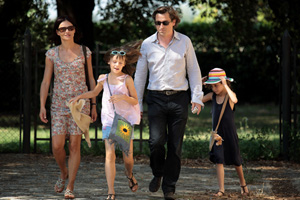 Hammer to Nail: At Hammer to Nail, we’re filmmakers in addition to being just film writers. You come from that background as well, having contributed to Cahiers du Cinema. I’m wondering if you think the state of film criticism would be better served if critics understood the pains of production?
Hammer to Nail: At Hammer to Nail, we’re filmmakers in addition to being just film writers. You come from that background as well, having contributed to Cahiers du Cinema. I’m wondering if you think the state of film criticism would be better served if critics understood the pains of production?
Mia Hansen-Løve: [in English] Yes! [mutual laughter] I do. [Through translation] Of course there are a lot of really good critics who’ve never engaged in any kind of filmmaking, but I think by and large if you look at the experience of some of the critics who wrote for Cahiers and who are also interested in becoming filmmakers, this is a very important thing, because it’s not criticism for criticism’s sake. It’s criticism that is in a dialogue with cinema. It’s not writing in a bubble. I think that this inhabits part of them and gives [a critic/filmmaker] something more lively in their relation to cinema.
H2N: I agree. I wanted to create a law in which film writers have to go to boot camp and actually make a film before they can sit down to start writing about cinema.
MHL: Actually, what you say is probably not such a bad idea, because I think that when you have some critics who have no experience in filmmaking, they don’t understand the importance of simplicity, and there is also a lack of comprehension sometimes in directing, in the way things are set up. Composition, for example, is a very important area… [at this point Hansen-Love interjects in English] I think this is such an important aspect of filmmaking, and it’s very, very rare that we get to talk about this. For me, I think it’s almost the most important thing, that we concretely acknowledge the connection between the meaning and the product. Very often we speak only about the meaning… [back to translation] I think a lot of times when we talk about films we talk about them in a very superficial way, or we speak about them in a very basic, fundamental way. But I think there is something lacking. There is not a connection being made between form and substance, and I think that part of the reason is they just don’t know.
H2N: That brings up a question I was going to ask later, but I should get to it now. Technically in this film, you create movement through panning as opposed to tracking or dollying, which creates its own sense of tension. Was that something you’d envisioned in the script stage or did that come about in collaboration with your cinematographer [Pascal Auffray]?
MHL: Yes, it’s true that I do use a lot of panning shots. It’s a specific, conscious choice of style. One of my ideas is that a camera is a heavy piece of equipment and you don’t want it to be too obvious or obtrusive, you want it to recede into the background and be there to follow the people. But it’s not the movement of the camera that you want to see, it’s the camera following the movement of the people. It’s the people who create the movement rather than the camera. This is actually a very basic style. I would never, for example, do an empty traveling shot for the sake of doing it. [in English] I was also saying that style is so important to me but it’s not often that I get to talk about style because the style of my films seems so discreet and not obvious.
H2N: Which excites me, personally, because I know that’s just as hard—if not harder—to pull off.
MHL: Unfortunately, people talk about style when you see it and the style I want to do is an invisible style! [laughter] It’s very thankless. All of my efforts lead to a style where no one will ever talk to me about it.
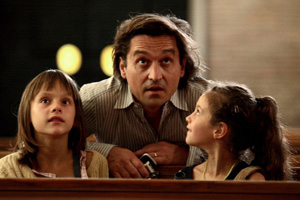 H2N: I am! That said, I do want to address something that isn’t directly technical. This film is such an authentic, honest depiction of the film industry, yet it also soars, first and foremost, as a human drama. I know you have a deeply personal connection to this story, but were you extra sensitive in the writing to make sure you found the right balance between those two elements?
H2N: I am! That said, I do want to address something that isn’t directly technical. This film is such an authentic, honest depiction of the film industry, yet it also soars, first and foremost, as a human drama. I know you have a deeply personal connection to this story, but were you extra sensitive in the writing to make sure you found the right balance between those two elements?
MHL: [back to translation] Actually, there is a very distinct effort to create a balance, because you have to find a balance between the fiction and reality of the film, the balance between what is cinema and what is real life. Of course, I’m making a film about the last days of a film company, and it’s structured over the different stages leading to its end. But it’s also structured in such a way that there’s an alternation of scenes. So in one scene you’ll have something that focuses more on the family and the human aspect, followed by a scene that deals with the business. That alternation tries to achieve that balance. [in English] To me, in the end of the film, the two different aspects come together in one single question, which is: how does someone survive through his own death, through his family or his body of work? At the end, that becomes the central question of the film.
H2N: Something that everyone brings up is the tragedy happening smack dab in the middle of the film. While that’s a jarring thing to encounter at first, your purpose for doing this quickly becomes evident and it doesn’t seem so jarring. I’m wondering how early you made that decision, when you knew that the story had to be told in this particular way?
MHL: It was there from the beginning. It’s funny because now that the film is over, a lot of people ask me about this, and find it very audacious, but actually when I was writing the script, I thought it was interesting but I was not aware of it being so special. There are a lot of films where someone disappears in the middle, you know? But, yes, it was there from the very beginning, and I will switch to French now… [laughter; back to translation] The first thing is that, by putting it in the middle, I was really working contrary to what a lot of films do, where you have a film about a suicide, like Control, in which everything leads to the apogee, the ultimate moment at the end, and the tension is created by wondering when we’re going to arrive at that moment. My intention was to do the exact opposite. I don’t like the idea of having a film that leads ultimately to death. I was interested more in having a film that ended more with going towards the light. I think people also have to be aware of the character of the wife and how important it is that you see her at the end. Here she is—the film is based on a real person who had this very unique aura—and we have to pay attention to the wife too, because she’s someone who has enormous courage. When we see her at the end, she has courage and a consoling presence that I think is really necessary. [back to English] And it’s not something I put to be positive, either. Not at all. To me, it doesn’t soften the reality of the cruelty of his death and the absolute desperation of his character. It doesn’t change that. I don’t care about trying to be nicer and say, “Oh, it’s okay.” But I did that because the things I saw that inspired me to make this film, there really was life and it wasn’t all about death. For me, in life there is hope, there is despair, there is joy, there is sadness, there is light and darkness, and I would like to make films that are faithful to all of these aspects and not only one of them.
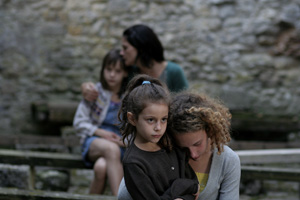 H2N: Do you take a different approach to shooting certain scenes—say, for instance, the post-tragedy mourning scenes?
H2N: Do you take a different approach to shooting certain scenes—say, for instance, the post-tragedy mourning scenes?
MHL: [back to translation] I didn’t do much terribly different when I shot those mourning scenes, but I did try to do it with a smaller crew and a lighter touch, and also to do it in a way that was much more simple. Because of course there were people there and the emotion of it was going to be getting to them, so by keeping the technical aspects lighter, more simple and in the background, it made things go more smoothly. This, incidentally, is what I did in the scenes with the children. I tried to make the technical and shooting side of it very simple, to leave room for what would develop in their acting. [back to English] I think I have never had the opportunity to talk about this before, the question if certain scenes make you film differently. But it’s true, of course I work differently with children than with adults, for many reasons, but one of the aspects is that I try to film very simply, so that all the time we have is devoted to working together, forgetting the movie we’re making and the camera, and I think it helps a lot. I’m really sure about this: you cannot get the same thing from children if you have to make a scene with 20 different shots. You have to have a very simple way of filming. You have to be able to let them play out a scene. To me it’s impossible to get a good performance from a child if you make one shot with two sentences and then you stop and then make another shot with one action. You have to be able to film the scene in one single shot, I think.
H2N: When it comes to the question of knowing if your child actors will be able to get to that emotionally deep of a place, how do you determine that? You don’t do screen tests or anything like that, or do you?
MHL: [back to translation] It’s true that I didn’t do tests to try to see if I could make the children cry, but what I did do is I worked a lot with them doing concentration exercises. I’d just have them sit on the sofa and really concentrate on what was going on inside of them so I could see what was transpiring on their faces. And I noticed especially with the 11-year-old girl, I watched her and her face changed. You could really see something changing. It was palpable. [back to English] It was really moving. I don’t like to work with children who have worked before in cinema. I try to work with children who have no notion of what filmmaking is. I really want them to have a certain innocence, a virginity in their relation to cinema. This is a very important point, at least for me. And it was moving to see this girl because we had just found her in the street. She came and she had no idea, but she had such a strong instinct of cinema. Sometimes you have the feeling that certain children have cinema in them but they don’t know it. It’s really amazing! But not in the bad meaning, like ‘professional.’ They just have a deep sense of cinema and she had that. So, when I filmed her I asked her not to do anything but just concentrate and go into herself. It was so moving how deep she was, using only her face and her look. So, for instance, the scene where she has to cry, I never used the word ‘cry.’ I didn’t tell her, “You must cry in this scene.” There were no words like that between us. But what I would like to add is that one thing that I’ve found to be the most effective way to work with actors, whether they are children or not, is the trust that you put in them. [back to translation] It’s amazing. If you have an actor and that actor knows you have confidence in them and that you trust them, they’re ten times better than they otherwise would be. It enables them to fully express themselves.
— Michael Tully








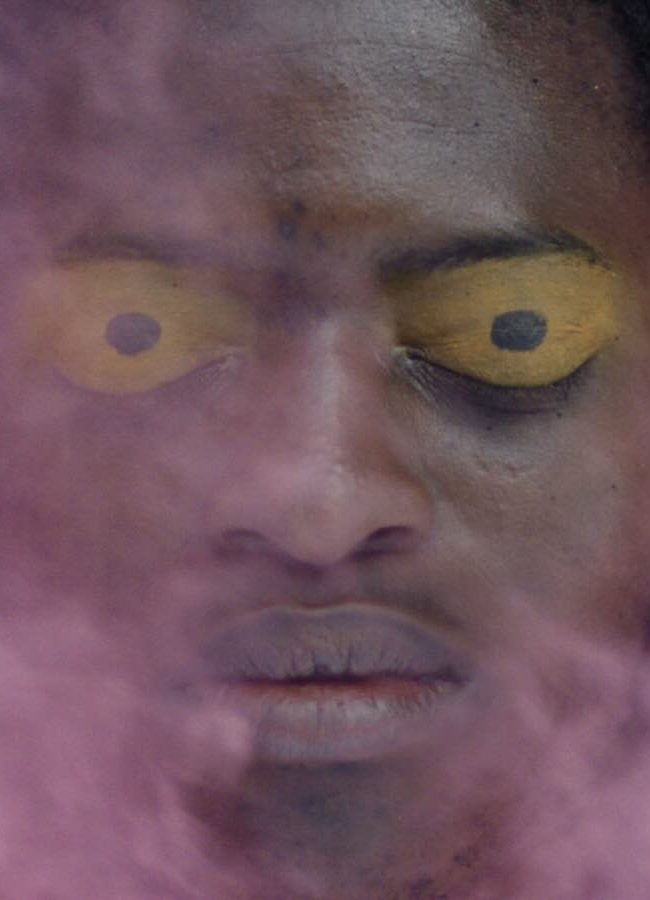
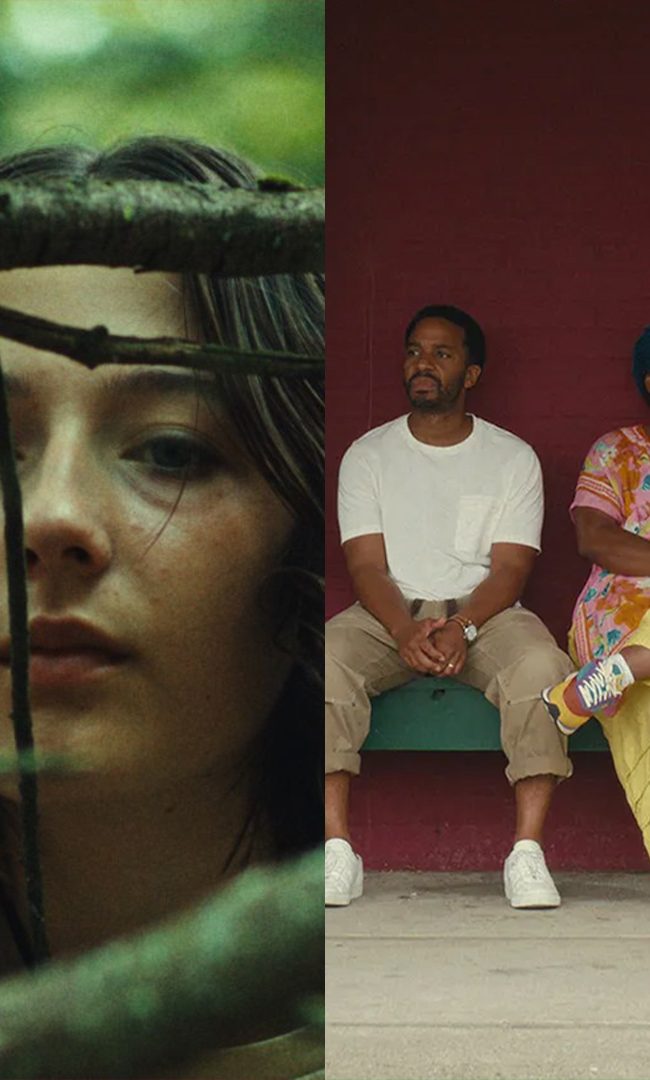


Pingback: Hammer to Nail » Blog Archive » FATHER OF MY CHILDREN, THE – Life Unspools
Pingback: A Conversation With Mia Hansen-Løve (GOODBYE FIRST LOVE) – Hammer to Nail